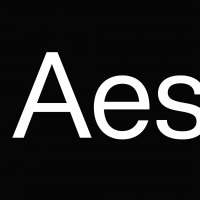which is a better format to copy paste or import into font program?
Options
WAY KYI
Posts: 139
I use mostly graphic object from my graphics program and copy/paste it into font software like Fontforge and Fontcreator.
Some suggest me to use svg/image format to import them into font program. But I find it too much work to do them than just copy/paste. Unless, you can automate them. Other thing is I find the size of the object ( Letter ) is treated very different in
both font software. I like FF better which give me nicer looking glyphs. In FC, I need to resize to fit in the x-height. I just installed FC and started learning, so I don't know much about it. I am seeking expert advice on graphic object vs image and ideal size of the object to import into both font programs. Thanks
Some suggest me to use svg/image format to import them into font program. But I find it too much work to do them than just copy/paste. Unless, you can automate them. Other thing is I find the size of the object ( Letter ) is treated very different in
both font software. I like FF better which give me nicer looking glyphs. In FC, I need to resize to fit in the x-height. I just installed FC and started learning, so I don't know much about it. I am seeking expert advice on graphic object vs image and ideal size of the object to import into both font programs. Thanks
Tagged:
0
Comments
-
FontLab offers several EPS import options:
• Keep size (1 EPS pt = 1 UPM unit)
• Fit between Ascender and Descender
• Fit between Ascender and Baseline.
You can also create a box of standard size, placed around each EPS object.
That also works (as a “selection”) for importing bitmapped images.4 -
Thank you for your suggestion. Don't know which font apps to choose but I want to try them all and FC seem to be a bit hard to learn in Opentype programming. I will try Fontlab later. Have a Merry Christmas and Happy New Year.0
-
Any more suggestion with FF and FC? Where I am currently working on my font development. Thanks
0 -
This thread, on b-spline editing in Inkscape, has some useful info about pasting into FontForge. Read to near the bottom of the thread for some useful pointers from @ivan louette about the size to use in Inkscape to copy into a 1000-unit font in FF. Copying and pasting Inkscape -> FF works very well.I found it very easy and quick to draw in Inkscape using b-splines, paste into FF, and then move the project into Glyphs for the rest of the work.1
-
One thing you can try is creating a frame in your graphics program and creating all the glyphs within that frame. That way, you can copy and paste the whole graphic, including the frame, into the font editor program to ensure consistent scaling and alignment, then delete the frame.
I do recommend getting comfortable creating and editing glyphs directly in the font software, though. You may be more familiar with your graphics tool now, but ultimately you will save a lot of time and unnecessary steps when you use the dedicated glyph design tools.
6 -
What John said. Learn how to use your font editor for drawing.
If you change over to drawing in a font editing program, you will initially be slower. BUT…
1) On average, it might take you something like 4-12 hours to become as fast or faster at drawing in a font editor, than you ever were in your drawing program. Given the number of hours it takes to draw a full font, this is not a large investment.
2) Most font editors have many things about their drawing tools that help you draw better (more “fontified”) glyph outlines than what you would get in your drawing program.
Also, you can do spacing in the font editor, which is something that benefits from being as close as possible to the drawing process. You can also do kerning, but contrariwise, that’s possibly the one real benefit of not working in your font editor: you won’t be tempted to start kerning too early. 😂
Even though >90% of pro font designers started out already knowing other drawing programs, >90% of all pro font designers do their actual glyph drawing right in their font editor. Probably closer to 99%. This is because of the two factors above.
Most of the people who try it, start out feeling like the font editor is unfamiliar and were more comfortable with their old drawing tools. But once they get used to the new app, almost none of them ever go back!13 -
About "Unless, you can automate them": Most font editors can be scripted. Here is an example Python script for fontforge that imports every *.eps file (like "A.eps", "B.eps", "a.eps", "one.eps") in the current directory and finally saves the font. It should also work with svg as long as you replace every occurance of "eps" by "svg". Depending on your graphic editor export functions, either svg or eps is preferable.import fontforge,psMat,glob
font = fontforge.font()
scaling = 0.673 # your custom scaling
for eps in glob.glob("*.eps"):
glyphname = eps[:-4]
glyph = font.createChar(fontforge.unicodeFromName(glyphname),glyphname)
glyph.importOutlines(eps, ("toobigwarn", "correctdir"))
glyph.transform(psMat.scale(scaling))
font.save("eps2ff-output.sfd")3 -
This is very true - I used to prefer designing my glyphs/chars in Illustrator, back when I used FontForge solely. Now whenever I find myself having to use Illustrator for other vector projects, I get annoyed as I far prefer using the pen tool/other tools from Fontlab .Thomas Phinney said:What John said. Learn how to use your font editor for drawing.
If you change over to drawing in a font editing program, you will initially be slower. BUT…
1) On average, it might take you something like 4-12 hours to become as fast or faster at drawing in a font editor, than you ever were in your drawing program. Given the number of hours it takes to draw a full font, this is not a large investment.
2) Most font editors have many things about their drawing tools that help you draw better (more “fontified”) glyph outlines than what you would get in your drawing program.
Also, you can do spacing in the font editor, which is something that benefits from being as close as possible to the drawing process. You can also do kerning, but contrariwise, that’s possibly the one real benefit of not working in your font editor: you won’t be tempted to start kerning too early. 😂
Even though >90% of pro font designers started out already knowing other drawing programs, >90% of all pro font designers do their actual glyph drawing right in their font editor. Probably closer to 99%. This is because of the two factors above.
Most of the people who try it, start out feeling like the font editor is unfamiliar and were more comfortable with their old drawing tools. But once they get used to the new app, almost none of them ever go back!1 -
Adding to what John said:One thing you can try is creating a frame in your graphics program ...
The other way round also works fine. i.e. creating a frame/box in the font program and copying it into the vector graphics software. Then create the glyph within that box and copy back into the font editor. This approach may not require scaling.
As they further added:I do recommend getting comfortable creating and editing glyphs directly in the font software...
And as Thomas Phinney also added, getting used to the font editing software would be the best approach. Font programs have many functions and tools which are specifically made for type design. Creating a tangent in Illustrator could be quite a work, and still won't get right. Whereas in a font editing software, a tangent is easy to make. Once you get used to the font editing software, you would also like to create logos in it.
2 -
There is no downside to drawing right in your font design software.2
-
I find the cubic bezier splines of the major font editors quite clunky to draw with. The spiros of FontForge, and the similar curvature tool of Illustrator, are better, and Inkscape's b-splines are amazing (they also convert accurately to very clean cubic beziers). The fact that the major font editors show no interest in these keeps me going back to Inkscape and sometimes FontForge.
That said, once I've made an initial drawing, I move it into Glyphs as quickly as possible for the reasons mentioned here.2 -
Thank you very much for each and everyone of you. Using font program to draw the letters are WYSIWYG and no need for scaling, moving or importing which will save a lot of time. I will follow as all senior members advised me here. Thanks and happy new year to you all.0
-
I agree wholeheartedly with Thomas, and experienced the exact same transition he mentioned. For many years Adobe Illustrator was my favorite drawing application for technical drawing as a graphic designer.
For a brief time many years ago I resisted this change, and fumbled through the process of working between applications until making the shift to work directly in a font editor. To this day, for logotype or symbol drawing I much prefer drawing in one of the font editors to save from the limitations and imprecision of using Illustrator.
Even moving between applications such as Fontlab, Robofont, and Glyphs there is a similar learning curve. I've found it best to just commit to these type of transitions as soon as you can and you'll get through the initial transition period without much difficulty.
Lastly, I'll reemphasize the spacing point in that there's no separating the horizontal and vertical spacing (counters, sidebearings, vertical metrics) from drawing letters. They are all one essentially, extending to the larger context of drawing and shaping words (and paragraphs). Although this white space is invisible in a sense, it will benefit you to think of the space surrounding the positive image of letterforms as part of the drawing process and approach it accordingly.1
Categories
- All Categories
- 46 Introductions
- 3.8K Typeface Design
- 478 Type Design Critiques
- 556 Type Design Software
- 1.1K Type Design Technique & Theory
- 641 Type Business
- 832 Font Technology
- 29 Punchcutting
- 510 Typography
- 120 Type Education
- 315 Type History
- 75 Type Resources
- 109 Lettering and Calligraphy
- 30 Lettering Critiques
- 79 Lettering Technique & Theory
- 533 Announcements
- 86 Events
- 110 Job Postings
- 167 Type Releases
- 169 Miscellaneous News
- 274 About TypeDrawers
- 53 TypeDrawers Announcements
- 119 Suggestions and Bug Reports





